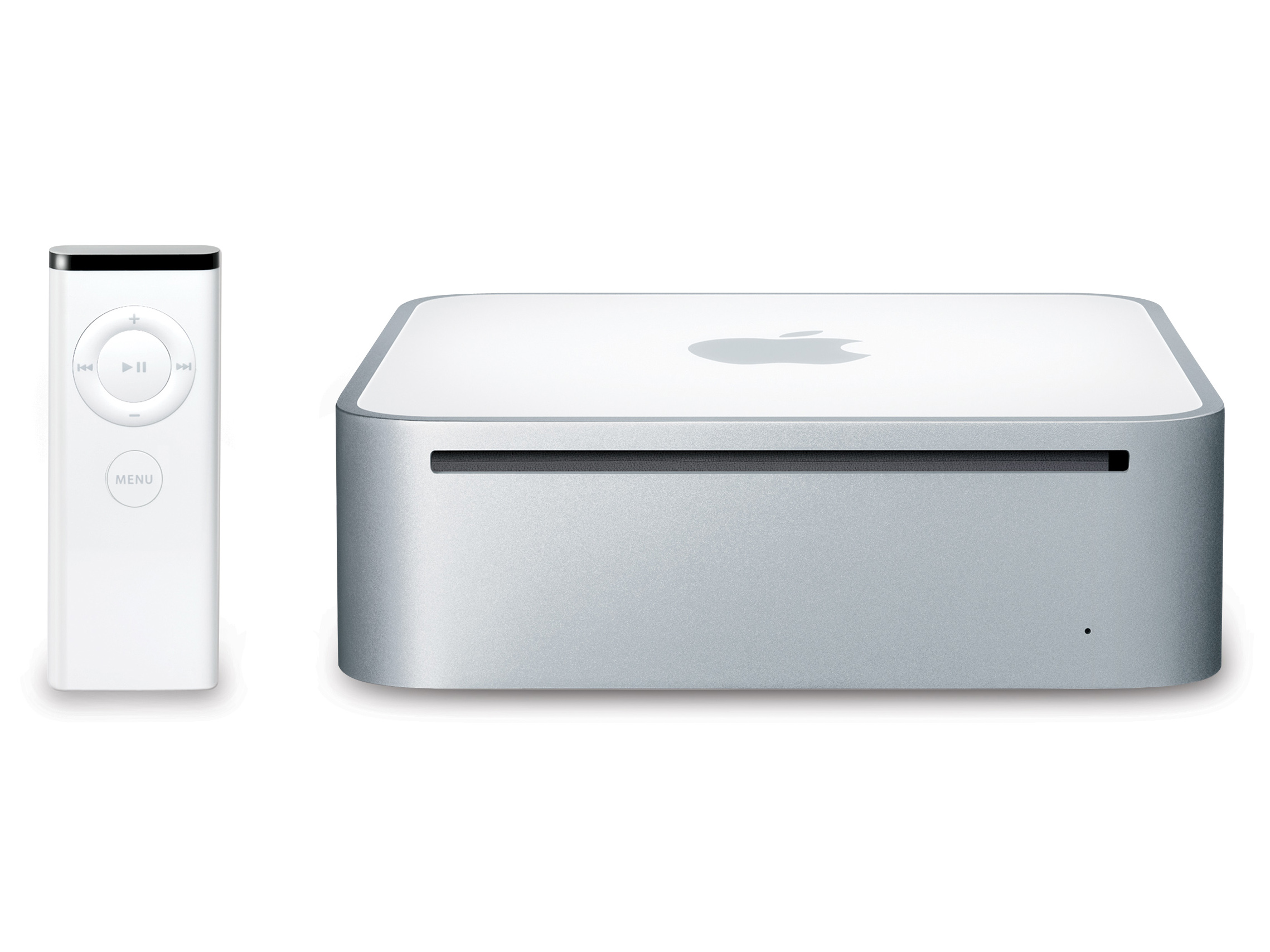TechRadar Verdict
Please give us some sort of TV functionality, Apple. Then we can be completely happy.
Pros
- +
Front Row file sharing
Nippy Intel processor
Runs cool and quiet
Still looks terrific
Cons
- -
Integrated graphics
Still no television
Why you can trust TechRadar
So near, and yet so far. The new Mac mini comes within a whisker of being the ultimate home media centre.
It's tiny, so it fits perfectly into that shelf underneath your TV. It's attractive, so no one will complain about having it on public display. It boasts some superb functionality, thanks to the new version of Front Row. There's just one problem. It doesn't have a television tuner.
You can connect the mini to a TV if you buy an S-Video/ Composite adaptor, but that's not really enough.
Before we're accused of unnecessary moaning, we should point out that you can add TV recording through an external device, such as Elgato's EyeTV. Not only will this let you watch shows on your Mac, but it will also give you the ability to pause and rewind live footage, plus record anything you're particularly keen on. You probably won't fancy splashing out extra on peripheral devices, though, considering that both versions of the mini are now £100 more expensive.
Lack of programmes
Still, it's not all doom and gloom. The Mac mini's design has been improved in other areas. Firstly there are now four USB ports on the back, plus a new digital/ audio line in. It also now comes with an Apple Remote and coupled with the brand new Front Row 1.2.1, that makes it a darn good media server, with the capability to share media files backwards and forwards with other Macs on the network.
We discuss this feature at length in the MacBook Pro review on page 80, so we won't repeat ourselves here. Don't think we're underestimating its importance; it potentially means more to the mini than it does to any other Mac.
As you'd expect with any of the Intel-based releases, this new model is also much faster than its predecessor. It's still not the most powerful beast in the jungle, but if you're after raw muscle, you really shouldn't be buying such a small system. The 1.66GHz Core Duo fitted inside this £599 machine, and even the 1.5GHz Core Solo in the £449 version, are far better processors than the previous PowerPC G4.
That's not the only upgrade; the memory is twice as fast as before (now 512MB of 667MHz DDR2 RAM), and a S-ATA hard drive will also speed things along.
You can see a performance comparison between the old PowerPC G4 Mac mini and this new Intel beast in various applications in our benchmarks below. Remember, though, that of our four test subjects, only iTunes and OS X give a true indication of relative processor speeds.
In several high-end apps, including Photoshop and InDesign, the Core Duo is handicapped by the Rosetta translation engine. However, while the speed hit on the new Intel iMac was quite significant compared to the old G5 model, the speed hit on the new Mac mini compared to the slower G4 model isn't that noticable.
Apple has replaced the old ATi Radeon 9200 card with what's known as an 'integrated' graphics chip - the Intel GMA950 chip forms part of the main computer chipset, and draws on the main system memory, rather than providing its own stash. It comes as no surprise that this results in lessthan- inspiring performance in any intensive 3D game, though the Mac mini was never designed to run Doom 3 or Unreal Tournament.
On the positive side the new Intel chip supports Core Image, so it can perform the ripple effect when widgets are dropped into the desktop and run the demanding Front Row, application - something not possible with the old ATi card.
Despite the huge price increase the Mac mini remains a superb piece of engineering and design. You'll be able to do far more with this model than you could with the previous G4 Mac Mini. Front Row gives it a brand new string to its bow, and turns it into an excellent media centre.
If only it had a TV tuner, then we would be demanding that you all go out and buy one, even with the inflated price tag. Russell James
Tech.co.uk was the former name of TechRadar.com. Its staff were at the forefront of the digital publishing revolution, and spearheaded the move to bring consumer technology journalism to its natural home – online. Many of the current TechRadar staff started life a Tech.co.uk staff writer, covering everything from the emerging smartphone market to the evolving market of personal computers. Think of it as the building blocks of the TechRadar you love today.
